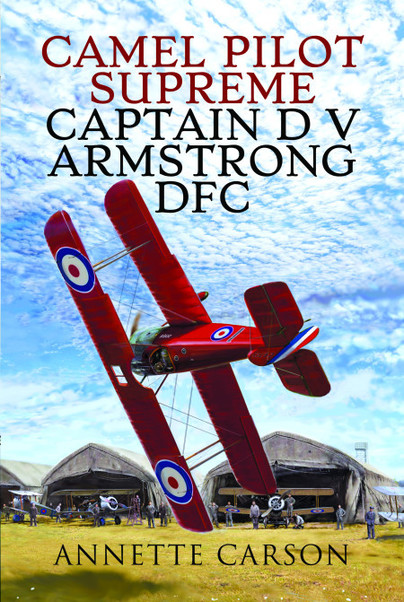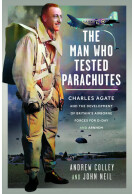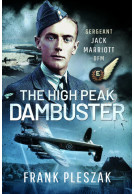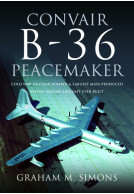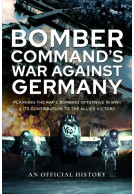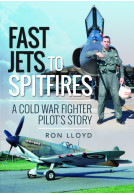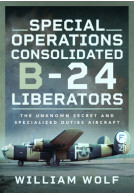Camel Pilot Supreme (eBook)
Captain D V Armstrong DFC
Imprint: Air World
File Size: 98.0 MB (.epub)
Pages: 248
Illustrations: 170
ISBN: 9781526752680
Published: 4th September 2019
Highlights!
- Over 170 illustrations, with action paintings in colour by artist Lynn Williams
- Author Annette Carson won the 2019 Thornton B. Hooper Award of the Leauge of WW1 Aviation Historians
| Other formats available - Buy the Hardback and get the eBook for free! | Price |
|---|---|
| Camel Pilot Supreme Hardback Add to Basket | £25.00 |
In aviation’s pioneering days the best and bravest airmen pushed the boundaries of flight in all dimensions and attitudes. When aeroplanes went to war this exploratory art, now known as aerobatics, was called ‘stunting’ in breezy RFC slang. Initially forbidden as foolhardy, its importance for survival soon became paramount in the life and death mêlées of dogfighting.
But pilots still delighted in the joy and exuberance of aerobatting for its own sake, and they recognized a master of that very special skill in young D’Urban Victor Armstrong, whose displays were nothing short of electrifying. Fluid and dramatic, performed with flair at ultra-low level, his exhibitions left spectators shaking their heads in disbelief. Even a century later his feats – some illustrated here – continue to evoke astonishment in piloting circles.
Until this biography little was known about his wartime experiences, and even less about his South African background. His great value to the authorities lay in his superb handling of the Sopwith Camel, which upon its introduction had taken a heavy toll in fatal trainee accidents. While still on active service he was sent around the units providing vivid proof that, properly handled, the stubby little fighter delivered the key to combat success: unrivalled manoeuvrability. His resultant fame eclipsed his other distinguished role in pioneering night flying and night fighting, an equally vital skill he was also detailed to demonstrate around the squadrons.
In these pages you will find yourself in the cockpit of the F.1 Camel and become acquainted with its rotary engine. You will meet many leading names including Billy Bishop, Cecil Lewis, Norman Macmillan, Robert Smith Barry, and the harum-scarum Three Musketeers from War Birds. Armstrong takes his place alongside them as one of the legendary figures of the first great aerial war.
It includes well written descriptions of early aviation technology and practises as well as aerobatic manoeuvres. There is also a sensitive narrative throughout, interweaving accounts from DVAs fellow pilots and friends.
Vintage Airfix
DVA was a very talented and likable person, and this come across marvellously in this book.
A very impressing memoir of a very impressive man.
Read the full review here
Review by Eric Probert
The newsletter of the North Weald Airfield Museum Association
There are innumerable photographs, some in colour, throughout the book which really bring Armstrong's aerial war to life.
This is a well-researched book, and throws a spotlight on a pilot who deserves to be better known.
Sky & Bullets
Read the full review here
'Superb biography ... an outstanding picture both of Armstrong and his fellow pilots ... impossible in a short review to adequately convey the scope of this fine book’.
Stand To! Issue 118
The more I read this book, the more I was deeply impressed with D.V. Armstrong, his unselfish nature and willingness to teach pilots all that he knew about aerobatics, as well as night flying and fighting. For the author, this book was the result of a 30 year effort to acquire and synthesize all that D.V. Armstrong was to the generation of aviators who knew him and valued his contributions to flight.
Goodreads.com
The book also has lots of photos from Armstrong's own collection that will give the reader a real sense of what a truly remarkable and special pilot he was. I recommend "CAMEL PILOT SUPREME: CAPTAIN D.V. ARMSTRONG DFC" to anyone who loves reading uplifting and inspiring stories.
As featured in
De Havilland Moth Club
“This very well researched book by Annette Carson is beautifully put together, skilfully done ... and much has been drawn from the accounts of contemporaries. To illustrate some of Armstrong’s feats there are excellent colour illustrations, together with never before published photographs.”
Model Airplane International, Feb 2020
Author article as featured by
Aeroplane Monthly, January 2020
This book appealed to me as both an aerobatic instructor and an amateur aviation historian. It is not just the tale of D.V. Armstrong. I learned things about WWI and aviation that were eye openers, and got a peek into how aerobatics developed. This book also makes the case that what we know of as the Immelman Turn maneuver really should be called the Armstrong turn.
International Aerobatic Club
Read the full review here
Along with a pilot’s-eye-view of flying WW1 aircraft, Carson gives a wealth of detail about Armstrong’s South African roots and time in the RFC, with many asides of his friendships, his life off the airfield, and eyewitness accounts of his extraordinary skill. It is particularly well illustrated featuring over 170 images including original photographs sourced from Armstrong’s own collection, enlivened with colour paintings by well-known artist Lynn Williams.
Flightline Weekly
While some of his contemporaries, like Pierre Van Ryneveld and Quintin Brand were lauded for their later achievements, very little was known of this South African flying hero until Annette Carson published this well researched biography that now allows Captain Armstrong to take his rightful place among the heroes of pioneering flight. A ‘must-read’ for any aviation enthusiast, it looks set to appear on many a Christmas list.
Read the full review here
“Skilfully gives us the background to the units and campaigns in which he served, and gives a masterful description of the development of aerobatics especially as applicable to the Sopwith Camel. Carson has ensured that Armstrong can take his rightful place in aviation history.”
Cross & Cockade
"Annette Carson has done a wonderful job of chronicling Armstrong’s life, flight training and ultimate recognition as the undisputed master of aerobatics."
Over the Front
Review by
Very little is known of this South African flying hero until Annette Carson published this well researched biography that now allows Captain Armstrong to take his rightful place amongst the heroes of pioneering flight. A 'must-read' for any aviation enthusiast.
African Pilot
As featured in
Royal Aeronautical Society
Annette Carson, author of 'Flight Fantastic' has been fascinated by the life of D'Urban Victor Armstrong for many years and her research into Armstrong’s life took her to South Africa to discover his roots.
Vintage Aircraft Club
As a Sopwith Camel pilot in WW1 Armstrong's life was more than full of challenges and his flying skills second to none. The book takes us behind the scenes into the training aerodromes in England, including Hounslow Heath, and the familiar names of those who he encountered both at home and above the trenches give authenticity to the story.
What is certainly beyond doubt is that Armstrong's stunts and one-man air displays inspired young pilots and certainly worried the enemy! His forte was ultra-low-level aerobatics and onlookers were convinced his wing tip touched the ground during his routine. To have survived the war flying a twitchy aircraft like the Camel is nothing short of amazing and 'Dodge' Bailey's contribution to the narrative bears this out.
The book is well illustrated and there are several paintings included by VAC member and Flitzer designer Lynn Williams. Williams has portrayed Armstrong's well documented signature routine in dramatic style on the book's cover.
Annette is to be commended for her commitment to the study of Armstrong's life resulting in an excellent biography. The book should certainly be included on your Christmas list.
This is the story of a young airman often described as “legendary”, but until now known chiefly from old pilots’ tales, from snatches of fleeting recollection, and from escapades often misremembered. Inspirational, thrilling, and amazing.
Books Monthly
Carson balances the drama of Armstrong's amazing and sometimes shocking exploits with a matter-of-fact method of storytelling. The author openly admits, for instance, that little is known of Armstrong's final month of service with 60 Squadron in late 1916, doing so in such a way that the reader is not disappointed. She cannot tell us what is not known.
Indy Squadron Dispatch
But she did manage to find a cache of photographs and documents from the First World War depicting Armstrong and his many airplanes. In fact, “Camel Pilot Supreme” is littered with more than one hundred pictures, some of which were found among Armstrong's personal photo collection.
The reader is immediately drawn to the center section of the book which features many of these striking pictures as well as paintings and aircraft color profiles, all on acid free stock. However, once you begin actually reading the book page by page, scores of additional photographs come to light. To say that this book is well illustrated would be an understatement.
With 224 pages packed into a 6.5x9.5” hardcover volume, “Camel Pilot Supreme” is easily transported in a backpack or briefcase. It is perhaps your best chance to know the Sopwith Camel fighter airplane of World War I as intimately as the men who flew it.
Read the full review here
Very highly recommended, and not just to aficionados of 1914-18 aviation.
Aeroplane Monthly, December 2019
Armstrong was one of those who mastered his mount and fully exploited all of its capabilities. This made him one of the first great aerobatic pilots, able to make his aircraft perform daring and impossible manoeuvrers. The author has presented this story well, supporting the written text with many images through the body of the book, and included an impressive full colour photo-plate section.
Firetrench
Read the full review here
What I can say is that Camel Pilot Supreme has to be the definitive biography of this legendary figure in aviation. It is deeply researched, hugely informative and extensively illustrated, both with a large number of pictures from Armstrong’s own photo album and some outstanding and beautifully reproduced artwork by Lyn Williams. Here is a great contender for Pilot’s book of the year.
Phil Whiteman, December edition of Pilot magazine.
This is an impressive title that offers great insight into the operational career of one of WWIs characters and most capable fliers.
Scale Modelling Now
Highly recommended
Watch the full video review here
Featured in
Great War July 2019
About Annette Carson
Annette Carson has written on a variety of non-fiction topics with a preference for history and biography. Her love of aviation led to involvement in aerobatics, a subject on which she has contributed to Encyclopaedia Britannica. She has served in organisational roles including Contest Director, British Team Manager and International Jury member, was an active delegate to the International Aerobatics Commission of the FAI, and in 1986 published Flight Fantastic: The Illustrated History of Aerobatics, earning the FAI’s Tissandier Diploma.
Carson is also widely respected for her revisionist books and articles on Richard III. She was a founding member of the historical research team that mounted the search for his grave in Leicester and commissioned the archaeological dig that found him in 2012.
She first started researching Captain Armstrong in the 1980s for Flight Fantastic, aware of his enduring fame as the greatest aerobatic pilot of the First World War. Whilst in South Africa she learnt of his origins in that country and began gathering material for a biography, encouraged by his nephew and heir who gave her a complete copy of Armstrong’s wartime photograph album. The original album, sadly, has since disappeared, but the extracts used here provide a unique visual account of his war.







